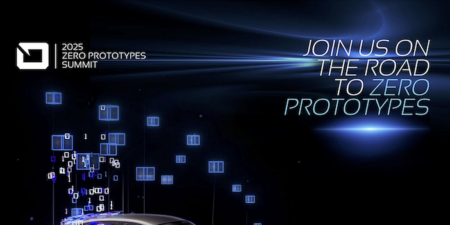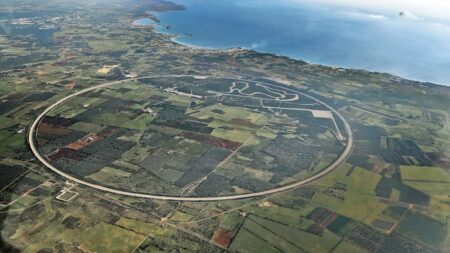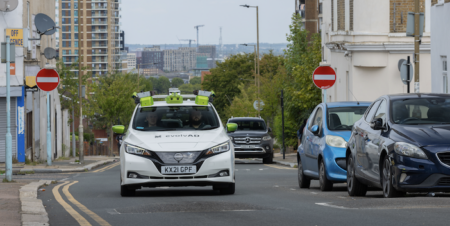Jaguar Land Rover has demonstrated a range of research technologies that it claims would allow a future autonomous car to drive itself over any surface or terrain. The project – the multi-million dollar ‘Autonomous All-Terrain Driving’ research project – aims to make the self-driving car viable in the widest range of real life, on- and off-road driving environments and weather conditions.
Tony Harper, head of research at Jaguar Land Rover, said, “Our all-terrain autonomy research isn’t just about the car driving itself on a motorway or in extreme off-road situations. It’s about helping both the driven and autonomous car make their way safely through any terrain or driving situation.
“We don’t want to limit future highly automated and fully autonomous technologies to tarmac. When the driver turns off the road, we want this support and assistance to continue. In the future, if you enjoy the benefits of autonomous lane-keeping on a motorway at the start of your journey, we want to ensure you can use this all the way to your destination, even if this is via a rough track or gravel road.
“So whether it’s a road under construction with cones and a contraflow, a snow-covered road in the mountains or a muddy forest track, this advanced capability would be available to both the driver and the autonomous car, with the driver able to let the car take control if they were unsure how best to tackle an obstacle or hazard ahead.”
To enable this level of autonomous all-terrain capability, Jaguar Land Rover’s researchers are developing next-generation sensing technologies that will be the ‘eyes’ of the future autonomous car. Because the sensors are always active and are claimed to ‘see’ better than the driver, this advanced sensing will ultimately give a vehicle the high levels of artificial intelligence required for the car to think for itself and plan the route it should take, on any surface.
The project’s surface identification and 3D path-sensing research combines camera, ultrasonic, radar and LIDAR sensors to give the car a 360 degree view of the world around it, with sensors so advanced that the car could determine surface characteristics, down to the width of a tire, even in rain and falling snow, to plan its route.
Harper said: “The key enabler for autonomous driving on any terrain is to give the car the ability to sense and predict the 3D path it is going to drive through. This means being able to scan and analyze the surface to be driven on, as well as any hazards above and to the sides of the path ahead. This might include car park barriers, tree roots and boulders or overhanging branches, as well as the materials and topography to be driven on.”
Ultrasonic sensors can identify surface conditions by scanning up to 5m ahead of the car, so terrain response settings could be automatically changed before the car drives from tarmac to snow, or from grass to sand. This is claimed to optimize all-terrain performance, without loss of momentum or control.
To complete the 3D path, branches overhanging a track, or a car park overhead barrier would also need to be identified to determine if the route ahead is clear. The Overhead Clearance Assist function uses stereo camera technology to scan ahead for overhead obstructions. The driver programs the system with the vehicle’s height, which can include roof boxes or bicycles, and the car will warn the driver with a simple message in the infotainment touchscreen if there is insufficient clearance.
Sensors could also be used to scan the roughness of the road or track ahead and adjust vehicle speed. The Terrain-Based Speed Adaption (TBSA) function uses cameras to sense bumpy terrain, including uneven and undulating surfaces and washboard roads, potholes and even standing water. It is claimed to be intelligent enough to predict the potential impact of these surfaces on the car’s ride and automatically adjust speed to keep passengers comfortable.
Another key element of successful all-terrain autonomous driving is the ability for vehicles to communicate with each other, especially if they are out of sight around a bend or on the other side of an off-road obstacle.
In a world-first off-road demonstration, Jaguar Land Rover has connected two Range Rover Sports together using DSRC (dedicated short-range communications) technology to create an off-road connected convoy. This wireless vehicle-to-vehicle (V2V) communications system shares information including vehicle location, wheel-slip, changes to suspension height and wheel articulation, as well as All-Terrain Progress Control (ATPC) and terrain response settings instantly between the two vehicles.
Harper added, “This V2V communications system can seamlessly link a convoy of vehicles in any off-road environment. If a vehicle has stopped, other vehicles in the convoy will be alerted – if the wheels of drop into a hole, or perhaps slip on a difficult boulder, this information is transmitted to all of the other vehicles. In the future, a convoy of autonomous vehicles would use this information to automatically adjust their settings or even change their route to help them tackle the obstacle.
“Or for the ultimate safari experience, cars following in convoy would be told by the lead car where to slow down and stop for their passengers to take the best photographs.”




